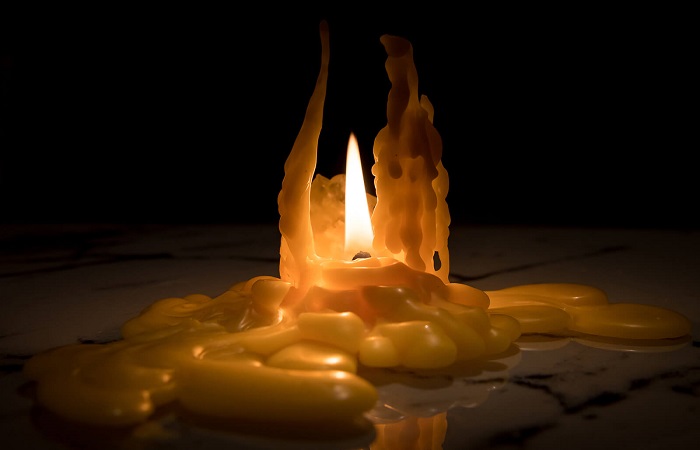FWP:
SETS == MUSHAIRAH
CANDLE: {39,1}
Here's a splendid mushairah verse. The first line is so broad and vague that we're given no idea of where the second line will jump to. Needless to say, under mushairah performance conditions, we'd be made to wait as long as conveniently possible before being allowed to hear the second line.
And then even when we heard the second line, we'd encounter a verb, and then another verb-- with no subject. Not until the very last possible moment, would we finally get, positioned as the rhyme-word, the punch-word ;xaar . All at once the whole verse would unfold its meaning in a sudden burst of pleasure and recognition. And then, also in mushairah-verse style, we'd know we'd gotten the full 'punch' from it, and we'd be ready to move on to the next verse, with no remaining questions and no further ado.
The basic image behind the verse is clear: the wick is a 'thorn' in the candle's foot, and it can't be removed except by the burning of the candle. The burning begins when a flame is applied, and ends in the 'death' of the candle in a little pool of cooling wax, its 'thorn' entirely consumed.
Similarly, the lover's suffering begins with the radiance/flame-- furo;G in its range of meanings is such a perfect word-- of the beloved. This fire of beauty kindles his inner being the way a flame kindles a wick. This fire, the source of the lover's pain (and delight), is also said to provide the 'solution of his difficulty'. (And of course, the meanings of ;hall include, most enjoyably, 'melting' and 'dissolving'; see the definition above.)
Just as the candle's painful 'thorn' is its heart, its essence, and is only to be removed through its burning-out and death, so the lover's suffering will have the same end. And the lover's end, like the candle's, is predestined from its beginning: the fiery beauty of the beloved lights the inner flame that will consume the lover, melting him right down until he and the 'difficulty' of his life burn away together.
What a simple, elegant, classy, enjoyable verse-- and how
much more vivid than the previous one, {73,1}! The
candle-wick and thorn analogy in this verse is far better grounded and more
satisfying than the unpersuasive use of sabzah-e ;xa:t
as a fire extinguisher in the previous verse.

Nazm:
They call the wick of the candle the 'thorn' of the candle, and the remover of this thorn is the flame of the candle. He has treated 'dissolving' as feminine; perhaps he was deceived by its being next to 'difficulty' [which is masculine]. Otherwise, the idiom is [to treat it as masculine]. (76)
== Nazm page 76